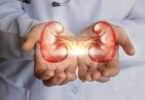Experts warn that a sedentary lifestyle in middle age, that is, after the age of 50, significantly increases the risk of developing frailty in old age, a geriatric syndrome that affects approximately 10% of these people, characterized by little physical activity, weight loss, tiredness and slow walking.
This syndrome can be disabling and its presence indicates that the person is more likely to have disability and other health problems, and is at greater risk of being hospitalized or dying prematurely.
The practice of physical exercise is the most effective intervention to delay the disability and adverse events normally associated with frailty syndrome.
Two tests are used to diagnose frailty: Cardiovascular in which, for example, the speed of walking and the balance of the elderly are measured. Other aspects: activity, energy balance, strength, slowness, nutrition, energy loss, central nervous system and vascular system and that allows small alterations in the person’s state to be identified as time passes.
To prevent frailty, specialists advise leading an active life, exercising regularly and following a balanced diet, within the framework of a social environment that promotes healthy aging and avoids dependency on the elderly.








